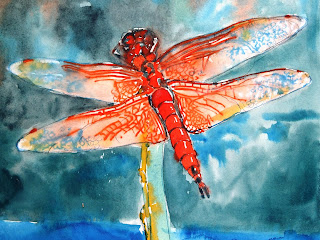Secrets of the Island Coast: a history of people and nature in the Esperance
– Recherché Region.
 |
| Some of the islands around Esperance - Esperance Helitours |
“The Island Coast” is the south eastern coast
of WA. Its squeaky white beaches look out to the scattered Islands of the
Recherche Archipelago. There are over two hundred Islands, some with unique
plant and animal species. Most are still largely free of past and immediate
human influence. Landlocked islands of
massive granite domes are dotted across the undulating mainland landscape.
Humans, though a blink in geo-biological time, have had profound influences on
historical and present ecosystems. In turn, they have been and are still being,
patterned and moulded by the landscapes subtle influences.
 |
| Esperance Helitours |
My
book aims to allow readers to develop an appreciation of the historical
contexts of human activities and their impacts on the Island Coast environment.
The chapters progress through past to present human impacts, including vital
physical factors such as fire and clearing for agriculture, upon the lives of
the regions animals and plants. Through personalized narratives, photographs
and illustrations, my book will attempt to reignite the primeval and heartfelt
feelings for nature that were once central to survival of all peoples and
their cultures.
Mammals
The original native mammals of the Island coast are mostly gone. All that are left are the large kangaroos and some of the small species, such as Pygmy possums and Honey possums, that are have rapid breeding and generational turnover as a feature of their lifecycle.
Rock wallabies
Black-flanked Rock Wallabies of the Island coast are now
only found on Islands of the Recherché and appear extinct on the adjacent
mainland. There are two subspecies represented. Petrogale l.lateralis are found on Salisbury island - they once
occupied most of central and southern WA and can still be found in isolated
pockets. P.l.hacketti is only found on
three islands of the Recherché -Mondrain, Wilson and Westall islands- and
nowhere else.
 |
| Dunnart |
Dunnarts
are members of the carnivorous marsupial Dasyurid family. Those found on
the Island coast include the grey-bellied dunnart (Sminthopsis griseoventer) which occurs as
far east as Cape Arid and the fat tailed dunnart (S.crassicaudata) which ranges across southern Australia. Dunnarts
are small marsupials about the size of a mouse with large ears and eyes. The
fat tailed dunnart stores fat in its tail which can become like a small turgid
carrot when full. They are aggressive predators eating small invertebrates,
frogs, lizards and mice.
 |
| Dragonfly |
Dragonflies
Order Odonata comprises
dragonflies and damselflies. The dragonflies and damselflies are an ancient
group of insects around long before the dinosaurs. Fossils as old as 250
million years have been found and the largest insect that ever lived was a
dragonfly with a wingspan of 70cm[1].These
predatory insects are among the most beautiful to us humans with their large
multifaceted eyes slender bodies and two pairs of large and veined translucent
wings
[1]
See the Australian Museum web site for further information http://australianmuseum.net.au/Dragonflies-and-damselflies-Order-Odonata
[1]
See the Australian Museum web site for further information http://australianmuseum.net.au/Dragonflies-and-damselflies-Order-Odonata





No comments:
Post a Comment